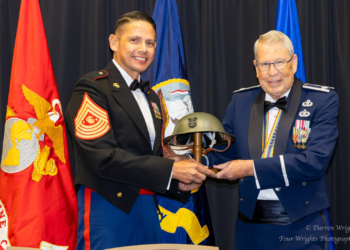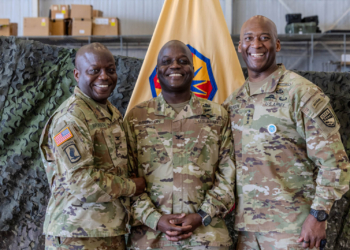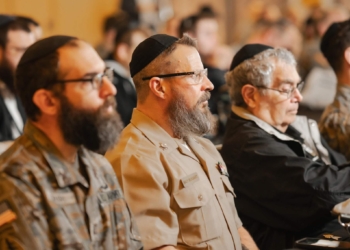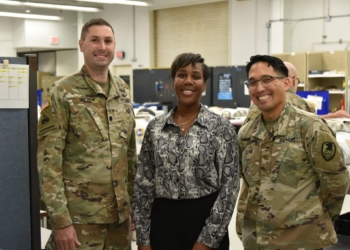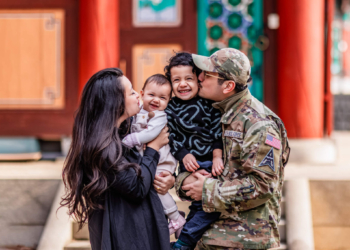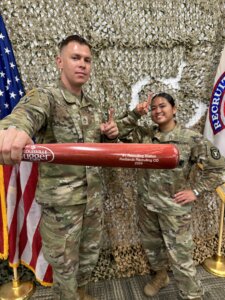
The standard within U.S. Army Recruiting Command is for each recruiter to achieve one enlistment per month, for a total of 12 in one year. This past recruiting year, which ended Sept. 30, Sgt. 1st Class Oscar Cisneros more than quadrupled that goal. The 30-year-old recruited 57 people into the Army, making him the sixth top-producing recruiter in the command.
“Last year, if you would have said that I would have put 57 people in the Army, I would be like, no, that’s impossible,” said Cisneros.
The Army’s failure to meet its recruiting mission for two years in a row made headlines in 2023, broadcasting a military recruiting crisis and putting a spotlight on changes the organization needed to make to sell military service as a viable option for today’s youth.
In response, Army Secretary Christine Wormuth and Army Chief of Staff Gen. Randy George introduced a bold restructuring of the Army’s recruiting strategy, aiming to capture a larger share of the labor market. Among the initiatives was the creation of more specialized talent acquisition roles for soldiers, designed to refine and modernize recruitment efforts. Citing those and other strategic changes as drivers for this year’s success, the Army announced in September that it surpassed its fiscal year 2024 target of 55,000 new active-duty soldiers.
“From the Big Apple to Watertown, Wisconsin, and every community in between, our recruiters truly crushed it,” said Maj. Gen. Johnny Davis, commanding general of U.S. Army Recruiting Command, in a media roundtable discussion of this year’s recruiting efforts. Davis touted a 43% improvement in productivity among USAREC’s recruiters with all recruiting areas seeing increases in enlistments.
Another change highlighted was the Army’s expansion of its Future Soldier Preparatory Course (FSPC), launched in August 2022 to assist potential recruits meet service requirements. The FSPC focuses on improving physical fitness and academic performance. By enhancing these skills, recruits can meet Army standards and advance to Basic Combat Training (BCT).
This past recruiting year, the FSPC graduated 16,000 recruits across the Army’s three components: active-duty, reserves, and National Guard, according to Brig. Gen. Jennifer Walkawicz of U.S. Army Training and Doctrine Command (TRADOC).
Sgt. 1st Class Patricia S. Wynter-Klutse credited the FSPC as a major contributor to her recruiting station’s success in fiscal year 2024. Her station, located in Barstow, California, surpassed expectations, achieving 137% of its recruiting goal.
Whether assisting applicants who struggle with test-taking and score low on the ASVAB or helping those who fall short of the Army’s fitness requirements, Wynter-Klutse and her team have found that the FSPC offers a critical support system. It provides a structured path for motivated individuals who need extra help to meet Army standards and begin their military careers.
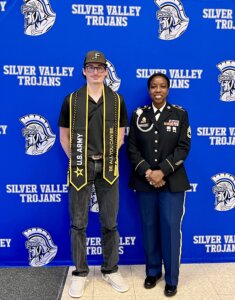
“You have applicants who don’t have the structure at home to say, I’m going to take three hours of my day to go study [for the ASVAB] because they get distracted or they find other things to occupy their time,” explained Wynter-Klutse. “Or when it comes to the health of our applicants, we’re finding it to be a challenge because we can invite them to come and participate in our future soldier training program, but that’s only 59 minutes per week.”
But in the FSPC, she said, participants undergo rigorous physical training and academic support to achieve the scores needed for their intended Army career path.
Taking time to invest in today’s youth pays off, explained Cisneros, who routinely visits the high schools near his recruiting station.
“I always go to my class presentations and I’m like, ‘You know what? I’m not here to recruit,’” he said. “‘I am just here to give out information. That way you’re knowledgeable and you can be informed of what the Army is actually about.’”
Cisneros frequently addresses students’ concerns about how the Army values family. For both he and Wynter-Klutse, who recruit in areas with a high Latino population, this is especially important. In Latino culture, family is a central social unit, and decisions like enlisting in the Army often require family support. Students are often surprised when Cisneros, who grew up in Mexico, shares that even when stationed overseas, his family was right there with him.
“They think that we are just soldiers 24/7 and we don’t have a life outside of the Army,” he said, highlighting a disconnect in Generation Z’s perception of military service.
After his presentations, he invites students to follow him on Instagram, where his profile showcases success stories of young women and men he has helped enlist. Over the summer, he attended the graduation of several students he recruited, posting, “Best of luck to my 3 Future Soldiers from Coachella Valley High! I know y’all are going to kill it!”
Social media has also become a valuable tool for Wynter-Klutse and her team. When applicants are selecting their Army jobs in her office, they often browse YouTube together to ensure the prospects are making an informed decision. Her recruiting station also shares videos featuring recent recruits, highlighting the motivations and stories of the current generation. Wynter-Klutse finds these stories resonate with applicants far more than her own, as someone who enlisted 18 years ago.
“My story of basic training is completely different from basic training now,” she said. “But when you have a young man or a young woman that just went through that experience of basic training, their story is more viable to our audience because they can completely relate to what they went through.”
Read comments



















